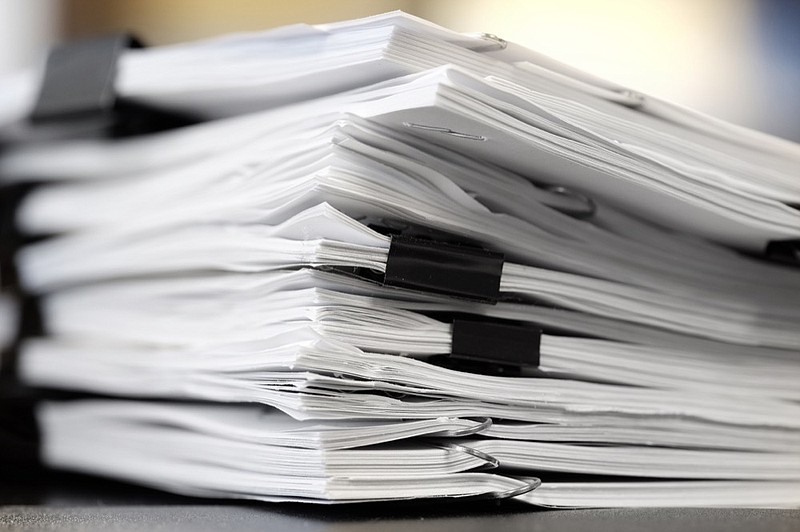Friday's jobs report from the U.S. Bureau of Labor Statistics was another humdinger: 428,000 nonfarm workers were added to the rolls in April. Employment growth was spread across all sectors of the labor market, led by gains in leisure and hospitality, manufacturing and transportation. The unemployment rate remained steady at 3.6%, just 0.1 percentage points from the previous 50-year low just before the pandemic.
The U.S. economy has now recovered 95% of the jobs lost during the COVID-19 recession, which should be good news. And for the 22 million Americans who have returned to work, it is good news indeed. But the report also reflects underlying imbalances in the labor market that might spell trouble for the broader economy. Specifically, widespread labor shortages are spiking inflation, and the Fed may have to administer some bitter medicine to control the infection.
(READ MORE: More work is needed to improve our financial literacy)
Despite the low unemployment rate, there are still millions of workers who have left the labor force and would require substantially higher pay to entice them to return. The Bureau of Labor Statistics produces another employment report called the Job Opening and Labor Turnover Survey report that looks at labor force participation and employer trends. While the survey's data lags the jobs report by a month, the March survey revealed a record 11.5 million unfilled openings in the U.S., with another 4.5 million workers quitting their jobs during the month, also an all-time high.
Meanwhile the labor force participation rate or the share of working-age civilians currently employed or actively looking for work declined to 62.2%. For context, the participation rate throughout the early 2000s was consistently above 66%. Economists attribute some of the decline in participation to Baby Boomer retirements during the pandemic, but that alone does not explain the longer-term trend. The survey data also shows that workers are confident enough to leave unsatisfactory employment much more readily than pre-pandemic. There are currently 2 openings for every 1 job seeker, also a record. Anecdotal evidence of labor shortages is all around us.
(READ MORE: Here's a primer on the GDP)
While economists are not in universal agreement on the causes of the "Great Resignation" in the labor force, they recognize that the answer lies in higher wages, something workers have not seen in over three decades net of inflation. Friday's report showed that wages rose 5.5% during the previous 12 months in response to the demand for workers, the fastest pace since 2001. However, inflation more than wiped out that gain, with prices rising by more that 8% year over year. While commodity price inflation is cyclical and can quickly abate, wage inflation is much stickier and can persist or accelerate rapidly, as the 1970's taught us. Enter the Federal Reserve.
Inflation had been muted for nearly four decades until the pandemic disrupted everything. During the financial crisis of 2006-2008, the Fed consistently said that it well understood and could quickly tame any nascent inflationary pressure, allowing the central bank to exert tremendous effort on a stimulus policy to boost employment. They were right in that instance and inflation did not accelerate in response to the massive stimulus. This time around, to combat the COVID-19 recession, the Fed fired a lot more ammunition and even changed its policy to encourage slightly higher inflation in the short run to make up for lost time and lost jobs. Now the inflation monster is stirring, and the credibility of the central bank is on the line.
(READ MORE: What is the Strategic Petroleum Reserve?)
It has become increasingly evident that the policy of ultra-easy money went on too long and must now be reversed more quickly than the Fed would prefer. Last week, Fed Chairman Powell announced a half-point hike in its benchmark rate to 1%, but this is merely the appetizer. After years of assurances that it knows how to tame inflation, the Federal Reserve will need to act more aggressively in raising interest rates with the understanding that a recession could well be the result. Note that even with the recent increase, the Fed funds rate is still negative in real terms after inflation, meaning that borrowing is essentially free.
Investors had hoped for a less rambunctious jobs report to forestall more aggressive rate increases. They did not get it, and the market has reacted accordingly. Cooling off the overheated labor market requires dampening consumer demand, a prospect that no one relishes. But for millions of retirees, businesses, workers and consumers, inflation is an insidious devil that destroys value, and its containment remains the primary responsibility of the Fed. It's just too bad when good news turns out to be bad news.
Christopher A. Hopkins is a chartered financial analyst in Chattanooga.
